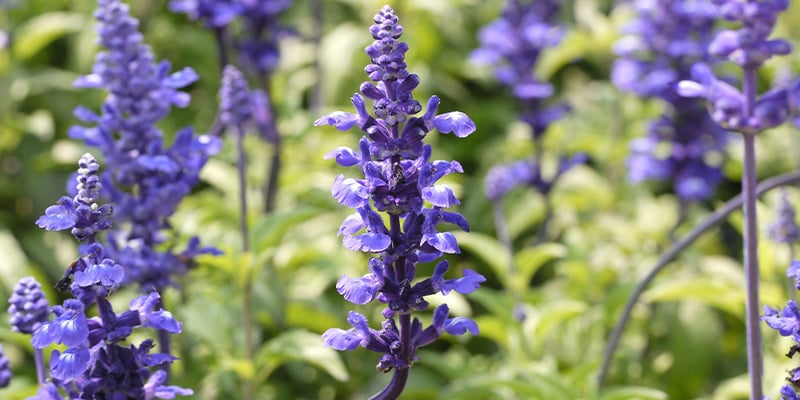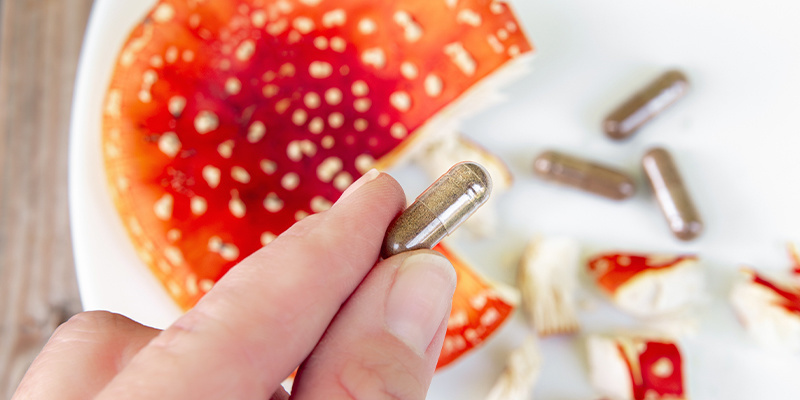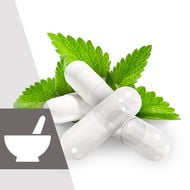
9 (legal) drugs that will induce a psychedelic trip
Interested in discovering which legal substances offer psychedelic-like effects? These 9 options might surprise you with their mind-altering potential—but be warned: not all are safe, and some are far from beginner-friendly.
Psychedelic substances are often associated with well-known illicit drugs like LSD or psilocybin mushrooms. But there are legal alternatives—both natural and synthetic—that can also cause altered states of consciousness, intense visuals, or dream-like effects. The key word here is “legal”—but legality is not universal. A substance that’s permitted in one country may be banned in another. That’s why it’s essential to check the legal status in your region before trying anything new.
This article covers nine psychoactive substances that are currently legal in some parts of the world and recognised for their psychedelic or hallucinogenic effects. Many come from plants that have been used in rituals or traditional medicine for centuries. Some are mild, others much stronger, and none are without risk. If you’re curious about legal psychedelic substances, this list is a good place to start.
Smartshop
Visit the Zamnesia Smartshop for everything from natural psychedelics like salvia, to herbs, energisers, and aphrodisiacs.
9 (legal) drugs that will induce a psychedelic trip

Many legal substances can mimic some of the effects of classical psychedelics. Some affect your mood, thoughts, or sensory perception, while others can influence dreams or induce vivid, semi-psychedelic states. Below, we look at nine of the best legal psychedelics known to cause these effects.
1. Salvia divinorum (Salvia divinorum)
Salvia divinorum is a powerful plant native to Mexico and traditionally used by the Mazatec people for spiritual healing. The active compound, salvinorin A, is a kappa opioid receptor agonist that produces intense but short-lived hallucinations. Unlike LSD or psilocybin, salvia affects different pathways in the brain, which can lead to unusual experiences, including sensations of moving through space, encountering entities, or losing touch with physical reality.
While it is legal in some parts of the world, many countries and US states have restricted or banned its sale. Smoking dried salvia leaves or using an extract can lead to effects within seconds that rarely last more than 10 minutes. Despite the short duration, the intensity can be overwhelming. For this reason, salvia is not a beginner-friendly option.
2. Fly agaric mushroom (Amanita muscaria)

Amanita muscaria is one of the most visually recognisable mushrooms, with its red cap and white spots. Found across the Northern Hemisphere, it contains psychoactive compounds such as muscimol and ibotenic acid, which act on the GABA and glutamate systems. Unlike psilocybin mushrooms, Amanita doesn’t cause the same type of hallucinations, but instead induces a deep, dream-like state that can be disorienting or euphoric.
Effects vary widely based on preparation and dose. Raw mushrooms can be toxic due to ibotenic acid, which can be converted to the less toxic muscimol by drying or cooking. Some users report out-of-body sensations, altered motor skills, and time distortion. It’s legal in many countries, but proper preparation is crucial to avoid poisoning.
3. Hawaiian baby woodrose (Argyreia nervosa)
Hawaiian baby woodrose seeds contain LSA (lysergic acid amide), a natural compound closely related to LSD. Although LSA is much milder, it can still produce visual distortions, altered thought patterns, and a dream-like state that can last for 6–10 hours.
Chewing or grinding the seeds is the common method of ingestion, though the outer coating may cause nausea and should be removed. Effects can be unpredictable and include vomiting, drowsiness, and confusion. While the seeds are often legal to possess, extracting or consuming them for psychedelic use may be prohibited in some jurisdictions.
4. Kanna (Sceletium tortuosum)

Kanna is a succulent plant native to South Africa, traditionally used by the San people for its mood-enhancing properties. The plant contains alkaloids such as mesembrine that act as serotonin reuptake inhibitors, leading to a soothing or mildly euphoric effect.
It doesn’t typically cause hallucinations but can boost mood and produce a sense of mental clarity. At higher doses, some users report mild visuals or tactile sensitivity. Kanna is often sold as a tea, powder, or extract and is legal in most countries.
5. Blue lotus (Nymphaea caerulea)
Blue lotus is a water lily that was used in ancient Egypt for both its soporific and aphrodisiac effects. The active compounds, aporphine and nuciferine, interact with dopamine receptors and may cause a relaxed, mildly euphoric state. Some users report light visual distortions or more vivid dreams.
Blue lotus is generally consumed as tea or soaked in alcohol to make tinctures or liqueurs. While it isn’t intensely psychedelic, its ability to subtly alter mood and perception qualifies blue lotus as a mild legal hallucinogen. Blue lotus is legal in most places, though prohibited for consumption in some countries.
6. Kratom (Mitragyna speciosa)

Kratom is a tropical tree from Southeast Asia, where its leaves have been used for centuries to address pain and boost energy. The main active compounds, mitragynine and 7-hydroxymitragynine, interact with opioid receptors. At lower doses, kratom can be stimulating. At higher doses, its effects may become more subdued, with some users reporting dream-like states.
It is not a classical psychedelic—in fact, it’s not really a psychedelic at all—but it can induce visionary experiences in large amounts. Regular use of kratom can lead to dependence, so users should be extremely cautious with this substance. Kratom is legal in some countries but banned in others, so check local laws carefully.
7. African dream root (Silene capensis)
Silene capensis, or African dream root, is used by the Xhosa people of South Africa to enhance dreaming. The root is not psychoactive in the usual waking sense, but it is believed to trigger lucid dreams and vivid dream recall. It contains triterpenoid saponins that may act on the brain indirectly.
It’s usually consumed as a tea or cold water infusion before sleep. While users remain sober while awake, the dreaming experience can be intense, with visuals and narrative-like dreams that some compare to light tripping. African dream root is legal and unregulated in most countries.
8. Mexican dream herb (Calea zacatechichi)

Also known as Mexican dream herb, Calea zacatechichi is traditionally used to encourage lucid dreaming. The leaves are usually smoked or brewed into tea. The taste is extremely bitter, but its effects can include vivid dreams, enhanced dream memory, and subtle hallucinogenic sensations during sleep.
Some users report a relaxed, meditative feeling before sleep. The psychoactive compounds in Calea are not fully understood, but its use is legal in most regions. Like African dream root, it won’t produce strong effects when awake but can alter the dream state significantly.
9. Nutmeg (Myristica fragrans)
Nutmeg is a common kitchen spice with surprising psychoactive properties at high doses. It contains compounds like myristicin and elemicin, which can produce hallucinogenic effects similar to deliriants. These effects usually take hours to set in and can include confusion, dry mouth, dizziness, and visual disturbances.
Nutmeg intoxication is widely reported as unpleasant and potentially dangerous. The dose required to experience its psychoactive effects is high, side effects are long-lasting (up to 48 hours), and toxicity is a serious risk. While legal everywhere as a food product, using nutmeg recreationally is strongly discouraged due to the risk of poisoning.
Are legal psychedelics safe?

Safety varies widely depending on the substance, the dose, and the user’s physical and mental health. Some, like kanna and blue lotus, are considered to be lower risk in moderate doses. Others, such as salvia or fly agaric, can cause intense and disorienting effects that may be harmful without supervision. Many legal psychedelics have not been studied as thoroughly as illegal ones, so the long-term risks are often unknown.
Interactions with medications, pre-existing conditions, and mental health disorders can also increase the risk. Additionally, some substances may be adulterated or sold with incorrect dosage information, especially if bought online. It's important to approach any psychoactive experience with caution, and never mix substances without understanding the risks.
Legal psychedelics: A wild ride or a mild vibe?

Legal psychedelic substances cover a broad range of plants, seeds, and roots—some mildly relaxing, others mind-bendingly intense. From the intense, disorienting effects of salvia to the vivid dream states of African dream root, there’s no single profile. The legality of each also varies by region, so always check your local laws before trying anything.
If you’re looking for legal highs that are potent and induce a trip, substances like LSA seeds, fly agaric, or salvia may come close, but with different effects and risks. For a gentler or more manageable experience, kanna or blue lotus may be more suitable. Always start low, do your research, and respect the substance. A psychedelic experience—legal or not—should never be taken lightly.
-
 6 min
22 May 2025
The top 10 most bizarre legal highs
Legal doesn’t mean safe—or smart. This list explores 10 strange and sometimes powerful legal drugs that highlight just how weird drug laws can be. It’s not a list of recommendations—just a glimpse...
6 min
22 May 2025
The top 10 most bizarre legal highs
Legal doesn’t mean safe—or smart. This list explores 10 strange and sometimes powerful legal drugs that highlight just how weird drug laws can be. It’s not a list of recommendations—just a glimpse...
-
 5 min
1 August 2022
The 5 Most Potent Psychedelics
Find out about 5 of the strongest psychedelics around. Covering a little of the drug, and giving an overview of the effects, this list is in no way exhaustive, but should give you an idea of what...
5 min
1 August 2022
The 5 Most Potent Psychedelics
Find out about 5 of the strongest psychedelics around. Covering a little of the drug, and giving an overview of the effects, this list is in no way exhaustive, but should give you an idea of what...
-
 4 min
24 September 2019
How to Extract LSA From Morning Glory Seeds & Hawaiian...
Morning glory seeds and Hawaiian baby woodrose seeds are potent natural sources of the psychoactive substance LSA. Here is how to extract LSA from the seeds of the plants.
4 min
24 September 2019
How to Extract LSA From Morning Glory Seeds & Hawaiian...
Morning glory seeds and Hawaiian baby woodrose seeds are potent natural sources of the psychoactive substance LSA. Here is how to extract LSA from the seeds of the plants.
-
 1 min
26 July 2018
Meet Hawaiian Baby Woodrose: A Natural Psychedelic
LSA is an increasingly popular hallucinogen, and Hawaiian Baby Woodrose seeds are one of the best legal ways to get it. So what exactly are they?
1 min
26 July 2018
Meet Hawaiian Baby Woodrose: A Natural Psychedelic
LSA is an increasingly popular hallucinogen, and Hawaiian Baby Woodrose seeds are one of the best legal ways to get it. So what exactly are they?
























